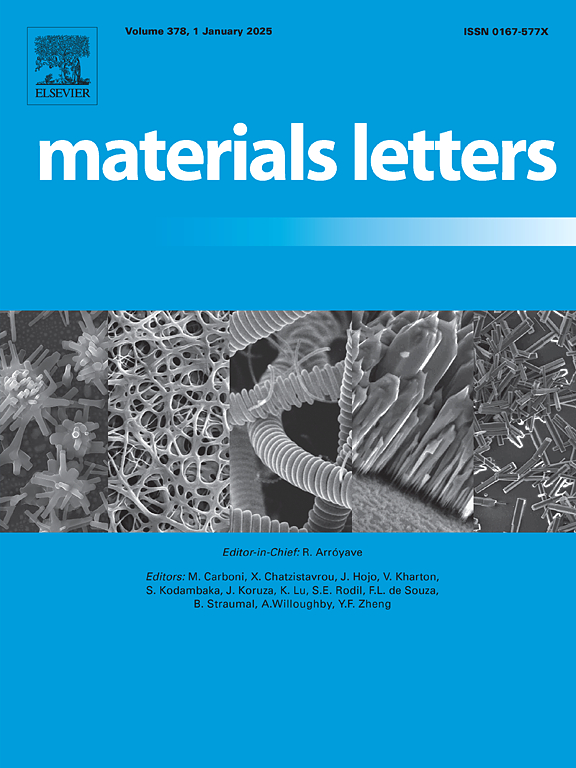Confirmation of Mie light scattering theory using complex polymers
IF 2.7
4区 材料科学
Q3 MATERIALS SCIENCE, MULTIDISCIPLINARY
引用次数: 0
Abstract
The diffuse reflectance spectra were recorded in vacuum before and after irradiating polymethylphenylsiloxane varnish with accelerated electrons (in situ). The samples under analysis included non-modified varnish and the one modified with SiO2 nanoparticles (2 and 10 wt%) applied onto aluminum substrates. It was established that six types of elementary absorption bands appear in the absorption spectra of the irradiated varnish. The radicals formed during irradiation were characterized in accordance with their energy state. The Mie light scattering theory was found to be applicable for complex polymer materials, namely, the inverse linear dependence of the energy of the absorption bands on the mass of radicals. This theory was experimentally confirmed for various inorganic crystals and simple polymers (e.g., polyethylene and polypropylene).
用复合聚合物证实米氏光散射理论
用加速电子(原位)辐照聚甲基苯基硅氧烷清漆前后,在真空中记录了其漫反射光谱。所分析的样品包括未改性的清漆和用SiO2纳米颗粒(2 wt%和10 wt%)涂在铝基材上的清漆。结果表明,在辐照清漆的吸收光谱中存在6种基本吸收带。辐照过程中形成的自由基根据其能态进行了表征。发现Mie光散射理论适用于复杂聚合物材料,即吸收能带的能量与自由基质量呈反比线性关系。这一理论在各种无机晶体和简单聚合物(如聚乙烯和聚丙烯)上得到了实验证实。
本文章由计算机程序翻译,如有差异,请以英文原文为准。
求助全文
约1分钟内获得全文
求助全文
来源期刊

Materials Letters
工程技术-材料科学:综合
CiteScore
5.60
自引率
3.30%
发文量
1948
审稿时长
50 days
期刊介绍:
Materials Letters has an open access mirror journal Materials Letters: X, sharing the same aims and scope, editorial team, submission system and rigorous peer review.
Materials Letters is dedicated to publishing novel, cutting edge reports of broad interest to the materials community. The journal provides a forum for materials scientists and engineers, physicists, and chemists to rapidly communicate on the most important topics in the field of materials.
Contributions include, but are not limited to, a variety of topics such as:
• Materials - Metals and alloys, amorphous solids, ceramics, composites, polymers, semiconductors
• Applications - Structural, opto-electronic, magnetic, medical, MEMS, sensors, smart
• Characterization - Analytical, microscopy, scanning probes, nanoscopic, optical, electrical, magnetic, acoustic, spectroscopic, diffraction
• Novel Materials - Micro and nanostructures (nanowires, nanotubes, nanoparticles), nanocomposites, thin films, superlattices, quantum dots.
• Processing - Crystal growth, thin film processing, sol-gel processing, mechanical processing, assembly, nanocrystalline processing.
• Properties - Mechanical, magnetic, optical, electrical, ferroelectric, thermal, interfacial, transport, thermodynamic
• Synthesis - Quenching, solid state, solidification, solution synthesis, vapor deposition, high pressure, explosive
 求助内容:
求助内容: 应助结果提醒方式:
应助结果提醒方式:


